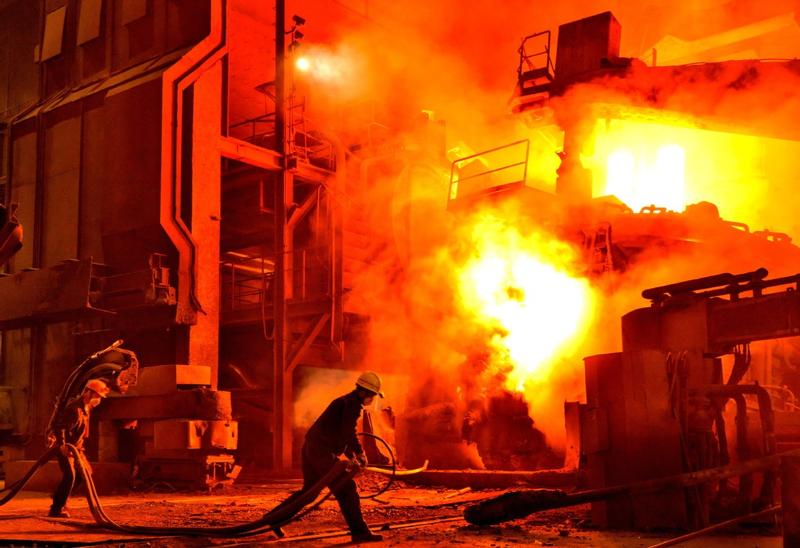 Employees work at a steelmaking facility in Maanshan, Anhui province, in November. (PHOTO BY LUO JISHENG / FOR CHINA DAILY)
Employees work at a steelmaking facility in Maanshan, Anhui province, in November. (PHOTO BY LUO JISHENG / FOR CHINA DAILY)
China will come out with an action plan soon to further reduce the carbon footprint of the steel industry in the country, a top industry association said on Wednesday.
According to the China Iron and Steel Association, the move came after the country vowed to peak its carbon emissions by 2030 and achieve carbon neutrality before 2060, as part of wide-ranging environmental protection efforts that envisage carbon reductions in industries like cement.
The country will also encourage steel companies to adopt green development throughout the product life cycle, while vigorously promoting green steel product design among steel mills, as well as the use of high-strength, long-life and recyclable products in the downstream sector
Qu Xiuli, deputy head of the CISA, said China will accelerate the application of non-fossil energy in the steel industry, especially the use of hydrogen as fuel, while continuously optimizing the raw material structure and energy mix. More enhancements in steel production technologies and procedures will be made to ease the bottlenecks in carbon emission reduction.
The country will also encourage steel companies to adopt green development throughout the product life cycle, while vigorously promoting green steel product design among steel mills, as well as the use of high-strength, long-life and recyclable products in the downstream sector.
ALSO READ: Chinese firm in Bangladesh taps green energy
Besides, with a focus on public buildings in big cities, the country will also speed up promotion of steel frame building technologies to raise awareness about green steel consumption.
"Steel is one of the key sectors for reducing carbon emissions this year," Qu said.
"It is urgent and of vital importance for the industry to further reduce energy and resource consumption and make more progress in low carbon development."
Data from the association showed that the industry had achieved another round of improvements regarding the efficient use of energy and resources last year.
Average energy consumed for every metric ton of steel produced by the key steel enterprises was equivalent to 545.27 kilograms of standard coal last year, down 1.18 percent on a yearly basis.
Water intake for every ton of steel produced fell 4.34 percent on a yearly basis, while sulfur dioxide emissions decreased 14.38 percent. The utilization rate of steel slags and coke gas increased on a yearly basis, albeit slightly.
Qu said China will also strengthen efforts for supply-side structural reforms, including strictly obeying the "capacity swaps" rules, or banning addition of any new capacity unless a bigger volume of old capacity is eliminated, to ensure zero growth of unlawful capacity.
She said the country will encourage mergers and acquisitions led by big steel companies to form new steel giants that have influence over regional markets.
The association also estimated China's steel demand will increase slightly this year, due to stable macroeconomic policies shaped by the country's effective control of the COVID-19 pandemic and the steady rebound in economic growth.
In 2020, China produced more than 1.05 billion tons of crude steel, up 5.2 percent year-on-year, according to the National Bureau of Statistics. The actual consumption of steel increased 7 percent in 2020 from a year earlier, data from the CISA showed.
READ MORE: Retailers embracing green wave to further tap younger consumers


